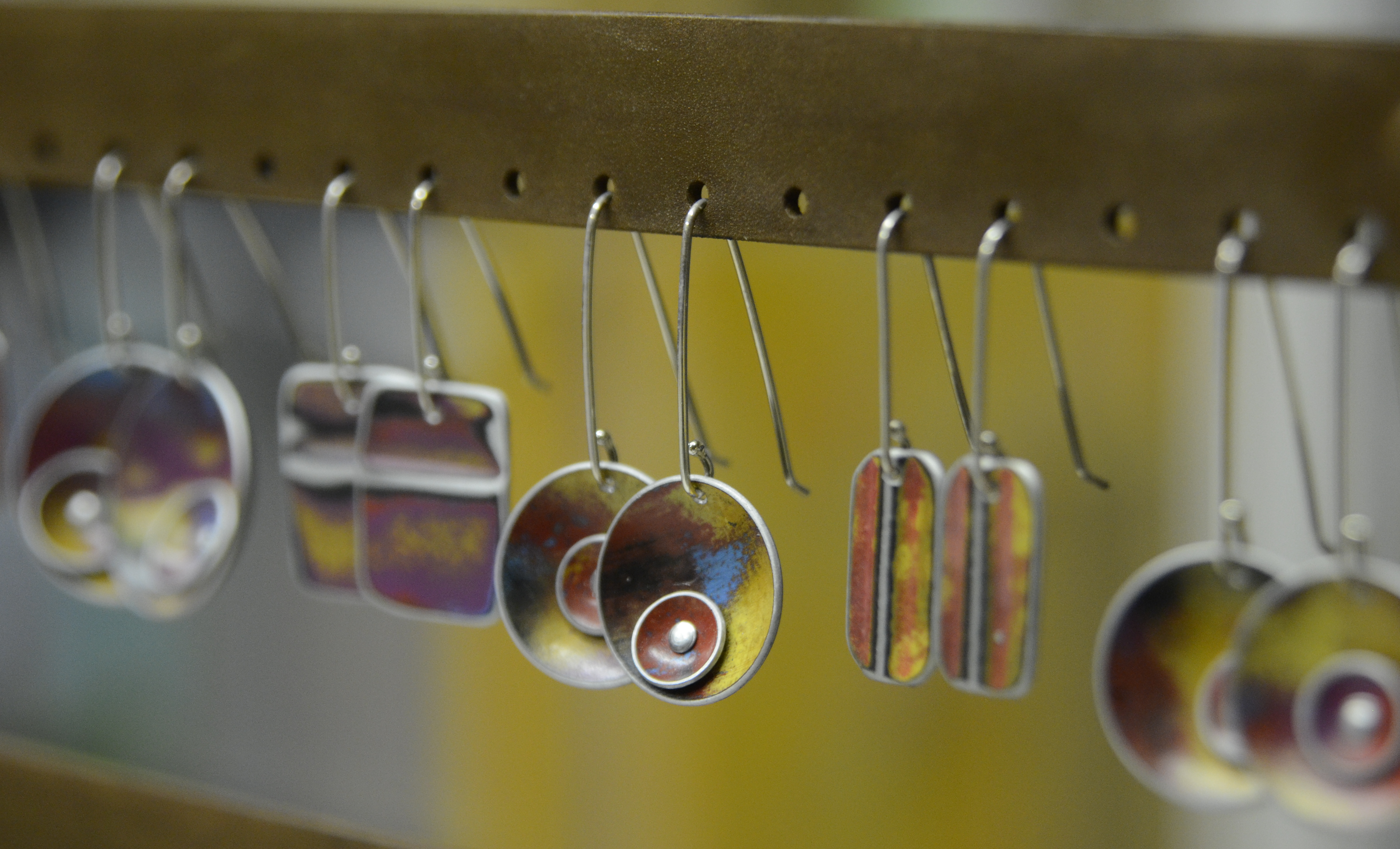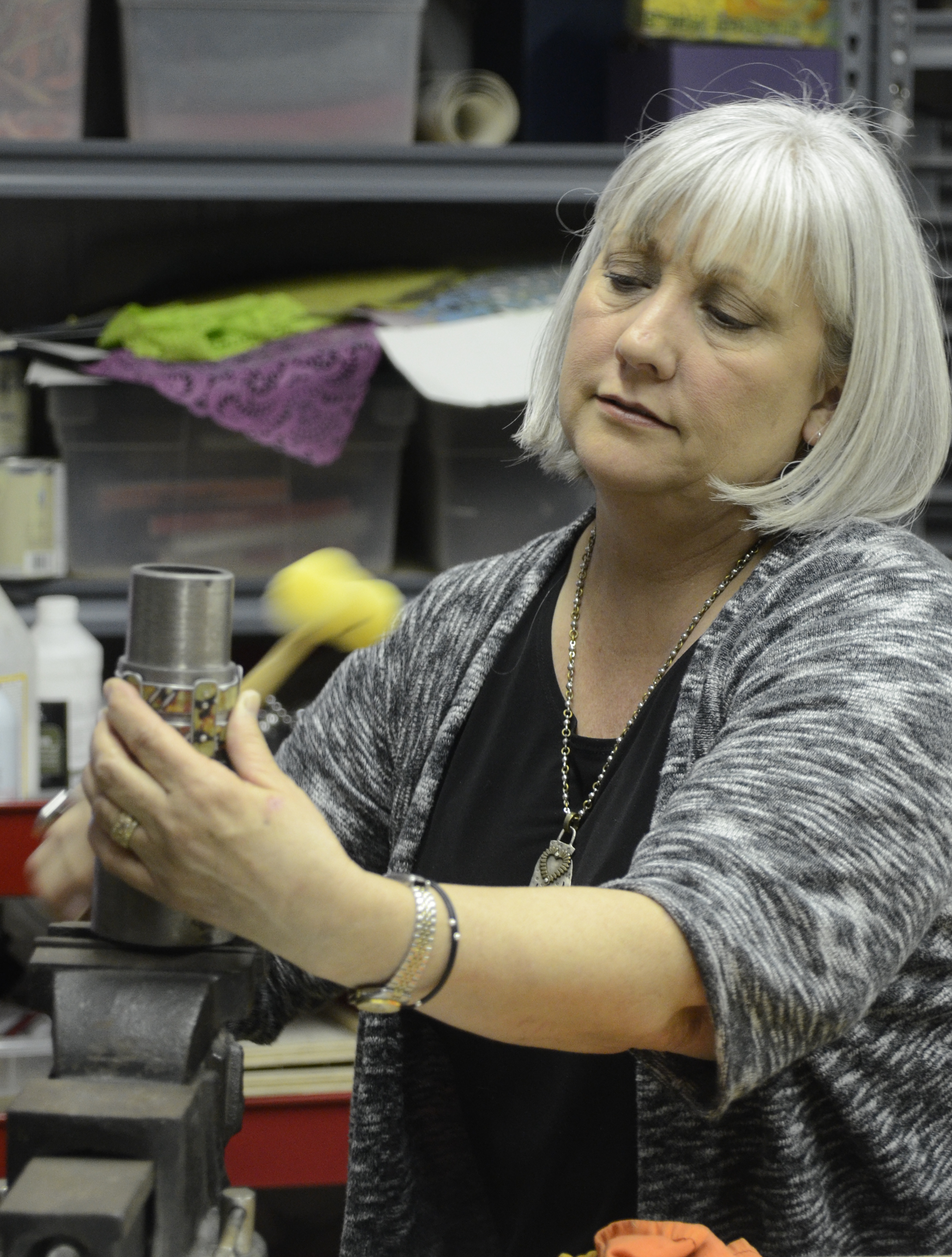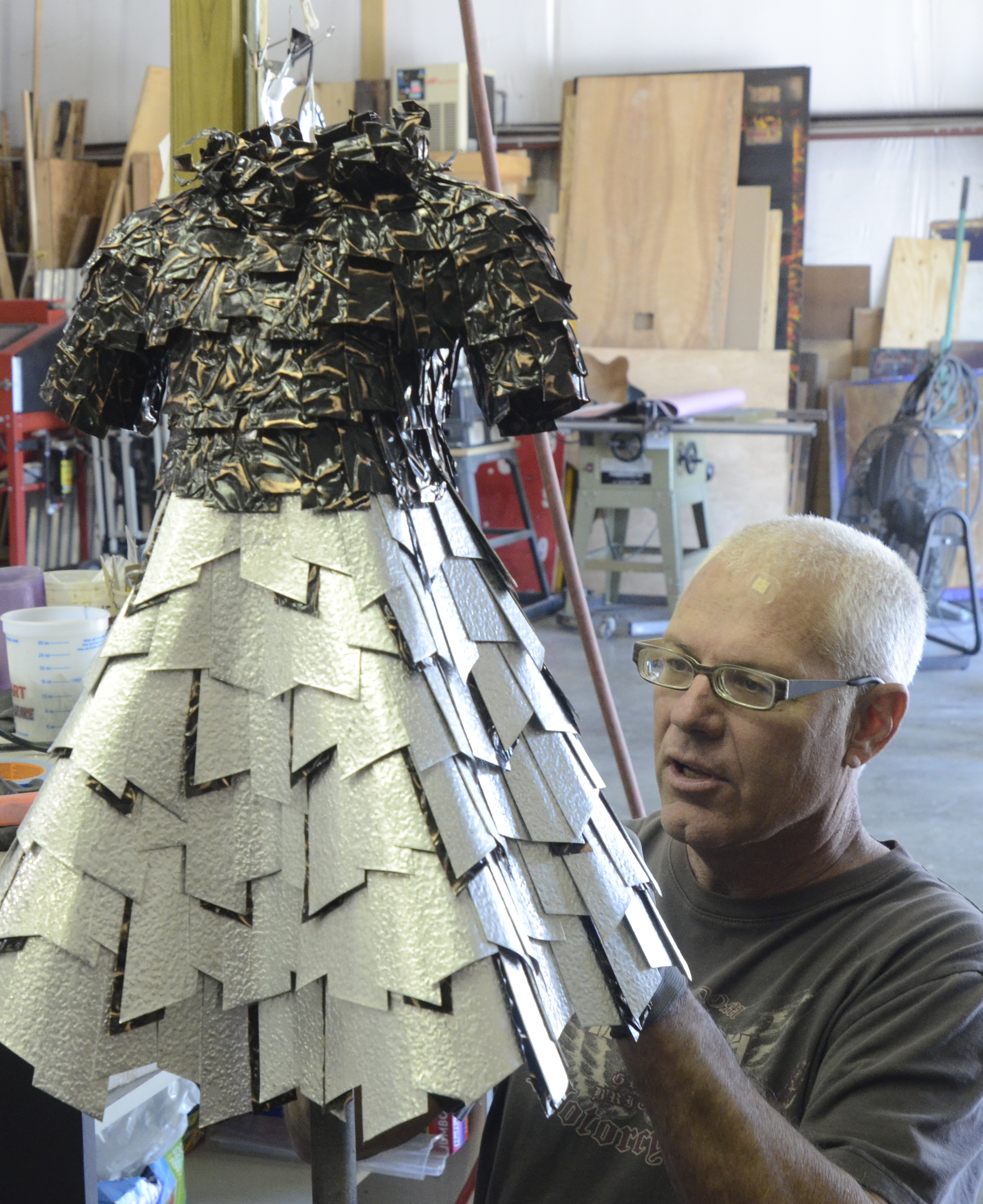Chattanooga earns art-friendly reputation, but artists say sales are rare
Friday, January 1, 1904
Professional artists, the ones who make their living selling their work, say they find many advantages in calling Chattanooga their home base. Among them: a beautiful place to live and work that allows for easy travel to other parts of the country, affordable housing and work spaces, as well as a vibrant community of peers and even local people who want to support the arts. What they don't find, at least not in numbers large enough to sustain them, are people willing to pay for their work.
An economic impact study done in 2010 found that residents of Hamilton County who attended area nonprofit arts and culture events such as Riverbend and the 4 Bridges Arts Festival spent an average of $23.61, excluding admission. This number does not reflect sales at galleries and private sales.
The city of Chattanooga has touted itself of late as an arts city, home to a growing number of professional artists, public art pieces, numerous arts-based festivals, museums, galleries and studios. Initiatives such as ArtsMove, originally created by Allied Arts of Greater Chattanooga (now ArtsBuild) in 2006, were implemented to lure creatives to town.
So what do they find when they get here?
"I know I exaggerate when I say this, but I liken it to Paris in the '20s," says sculptor Roger Halligan, 65.
He and his wife and fellow artist Jan Chenoweth, 67, moved in 2007 from North Carolina and have found a growing arts community that is supportive and inspiring. She is a painter who also does three-dimensional works.
"We love it here," he says.
What artists find lacking is a large number of Chattanoogans who are willing to pay for art. That is not unusual, they say, and hardly a deal breaker.
"I see virtually no income from the state of Tennessee," says sculptor John Petrey, 54. "We did not move here to make money here. That would be true of anywhere we went except for a major metropolitan area."
His pieces can range in price from $500 to $35,000, and most people who own his work, he says, have just one or two pieces. Smaller markets can easily become "oversaturated," he says.
"We never intended or anticipated that John would sell here," adds his wife, Peggy Petrey, 53, also a professional artist who designs jewelry as well as mixed-media pieces.
She says about one-eighth of her income comes from sales in Chattanooga. She also sells her work in Nashville and Gatlinburg and says in-state sales now account for 50 percent of her total sales.
John Petrey has his work in 10 galleries around the country and focuses on 12 festivals in locations from as far west as the Rockies, as far north as Maryland and as far south as Miami. Chattanooga offers a central location for his travels and was a big reason they moved from Orlando, Fla.
Peggy Petrey's work is in eight galleries and she also shows at festivals.
John McLeod's situation is different. Also a sculptor, the 39-year-old grew up here, left for 11 years and returned seven years ago. He estimates that 95 percent of his sales are to local buyers. He qualifies that by saying 2012 was a "very difficult" year and that he supplemented his income by doing other things like workshops.
"The first four months of this year have been incredibly good, however," he says. He's unsure why, though he says he has spent a good deal more effort marketing his work through social media and an improved website.
ARTSMOVE EFFORTS
ArtsMove, which gave artists a financial incentive such as forgivable mortgages and reimbursement for moving expenses if they bought a home in certain parts of Chattanooga, was part of the reason each chose to locate here.
The program, implemented in five phases, has attracted 30 participants who have relocated here since 2006. Estimating the exact number of people who make their living creating art in Chattanooga is difficult, but Kayleigh Reeves, membership manager at the Association for Visual Arts, puts the number at about 1,000.
The artist couples interviewed for this story say they were looking to relocate and were impressed by what was happening in the arts when they chose Chattanooga. Halligan says he remembers being here in 1983 while installing a piece at the Hunter Museum of American Art.
"I remember walking into the Read House and thinking, 'I hope this hotel has a restaurant because I am not going back out.' ''
This was before the Tennessee Aquarium, the 21st Century Riverfront project and the public art program. His opinion changed with later visits, he says, when he returned to install pieces at the Hunter and in the Bluff View Art District.
Chenoweth says they both noticed the public art pieces and the general artistic spirit here during their visits, "and we just like Chattanooga."
They were already considering moving here when a friend told them about ArtsMove.
"That was the icing on the cake," she says.
They did not expect the local market to support them, but have been pleasantly surprised at the financial support, while small, they have received.
"No, we do not make much money from the local market, but we didn't expect to," Halligan says. "It's a good location with a tremendous arts community."
Chenoweth agrees.
"We had dinner the other night with a large group. All artists. It was the warmest feeling. We all inspire and understand each other."
That sense of inspiration and community is important to them.
"We were welcomed immediately," Chenoweth says. "For us, being a part of a community is important, and it is important for us to stay involved."
They operate Chenoweth-Halligan Studios on Rossville Boulevard and are renovating a former Jehovah's Witness Kingdom Hall on White Oak Road. The 3,000-square-foot building will serve as gallery/studio/living space when completed.
Thanks to their station in life, the couple say they are able to program artists, exhibits and shows in the space that they want to see and aren't concerned about any commercial aspects. If items sell, all the better, but it is not the priority, though Chenoweth says they have far exceeded even their best hopes in that area.
"Our gallery is project-based," Chenoweth says. "We want to have art that is not seen in this area. It is not a true commercial gallery, but we've had great crowds. We like people coming in and asking questions. We are not evangelical, but we're close and word is getting out."
Both couples say they felt they were being "used," in a good way, by the people at CreateHere, which took over the ArtsMove program in 2007, when they were being courted to come here.
"They were using us to attract other artists," Peggy Petrey says.
The Petreys were looking at San Diego or Santa Fe, N.M., as possible new places to live in 2006. They came here for the 4 Bridges Arts Festival and then traveled to Asheville, N.C., to look at possible locations there. When they got home, they found the information about ArtsMove in their 4 Bridges information packets.
Their 5,000-square-foot studio/home is on Main Street. He has his space downstairs, and she does most of her work upstairs. Their art pieces can be found inside and outside the space.
He is known for his dress sculpture pieces, but he also created the "Blue Boy Pull Toy #1," also known as the "blue rhino" piece that resides at Coolidge Park. The city of Chattanooga paid $32,500 for the work, raising the ire of some who questioned a government body spending public money on art. For some, even a couple hundred dollars is too much.
"I've even heard artists say, 'I can't spend $300 on a piece of art,'" Peggy Petrey says.
All of the people interviewed agreed that getting people to actually pay for art is one of the biggest challenges they face. Each mentioned in differing ways that Chattanoogans, often the same people, like to gather for arts events, which in its way is supporting the arts, but they rarely buy anything. This doesn't help the artists, they say.
Among the bigger issues is being asked to donate a piece of art or gallery space to one of these events.
"I won't do it," McLeod says. "The biggest turnoff for an artist is someone saying it will be good publicity. You wouldn't ask a doctor to donate three weeks of his time.
"There is a difference between those who want to appear at a social event where there is art and someone who wants to support artists," McLeod says.
He says he doesn't think Chattanooga is much different than most other non-major metropolitan cities in this regard. He adds that several local companies have purchased some of his larger outdoor pieces and the response has been positive.
McLeod's works can be seen at the offices of Rock City, UBS, FoodWorks, in the Sun Trust Bank building on Broad Street and Henderson, Hutcherson & McCullough. The accounting firm bought one of his pieces for its Warehouse Row offices.
Called "Sundial," the 14-foot-tall work is made from rust-patina carbon and stainless steel. Its shieldlike shapes cast interesting shadow patterns on the ground.
"We love it, and I think it adds to our building," says Lauren Heatherly, HHM's human-resources director.
"It's cool and very unusual, and people stop and ask about it and have their picture made with it all the time. It has become a landmark for the building."
Contact staff writer Barry Courter at bcourter@timesfreepress.com or 423-757-6354.


